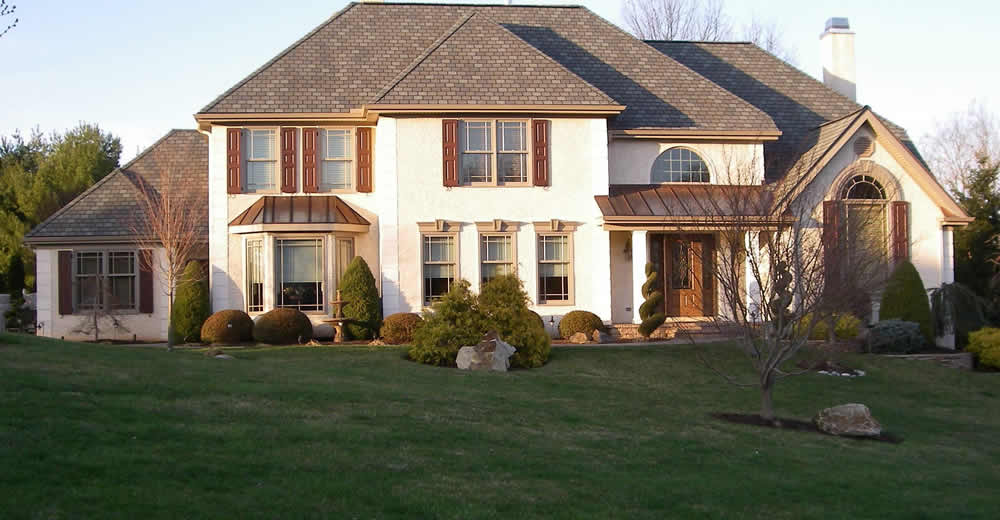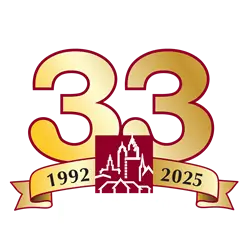Philadelphia, known for its deep historical roots and vibrant cultural tapestry, presents a unique and fascinating architectural landscape, especially noticeable in the variety of roofing styles across the city. This extends from the heart of the bustling city center, with its blend of contemporary and classic designs, to the tranquil suburbs, where traditional styles meet modern practicality. The roofing in Philadelphia and its neighboring regions is not just a matter of covering buildings; it’s a testament to the city’s architectural evolution, marrying functionality with aesthetic appeal. In this blog post, we will delve into the most prominent local roofing styles, examining their distinctive features, historical significance, and the reasons they have become so ingrained in the city’s architectural identity. This exploration will provide a comprehensive look at how these styles contribute to Philadelphia’s unique skyline and reflect the city’s ongoing narrative of growth and adaptation.

Colonial Style Roofing
The Colonial roofing style stands as a prominent and iconic feature in Philadelphia’s architectural landscape, a direct reflection of the city’s rich historical heritage. Characterized by their steeply pitched design, these roofs are expertly crafted to ensure efficient drainage, effectively handling the city’s rain and snowfall. A quintessential aspect of Colonial roofs is the inclusion of dormers, which not only enhance their aesthetic appeal but also increase functionality. Traditionally, these roofs were adorned with wood shakes or shingles, contributing to their classic and timeless appearance. However, in recent times, there has been a shift towards incorporating asphalt shingles in their construction. This modern adaptation balances the historical authenticity of the Colonial style with the needs of contemporary living, offering improved durability and a more cost-effective solution while maintaining the distinct character that these roofs bring to Philadelphia’s architectural tapestry.
Mansard Roofs
Mansard roofs, drawing inspiration from traditional French architectural design, are a distinctive and familiar feature in many of Philadelphia’s older neighborhoods. These roofs are uniquely characterized by their four-sided structure, each side having a double slope – steep on the lower side and gently sloping on the upper. This ingenious design not only contributes to the aesthetic appeal of the buildings but also cleverly maximizes space, creating additional room in the attic area that can be utilized for living or storage purposes. A hallmark of Mansard roofs is their ornate detailing, which adds an element of elegance and historical charm. Typically, these roofs are finished with high-quality materials such as slate or copper, lending both durability and a classic touch to the buildings they grace. This combination of functional design, decorative elements, and the use of enduring materials makes Mansard roofs a celebrated part of Philadelphia’s architectural heritage, blending utility with a timeless elegance.
Flat Roofs
In the densely populated urban regions of Philadelphia, flat roofs are a predominant architectural feature, especially evident on row houses and various commercial structures. Their prevalence in these areas is largely attributed to their practicality in compact city environments. Designed with functionality in mind, these flat roofs usually incorporate a subtle pitch, which is not immediately noticeable but is crucial for effective water drainage. This feature ensures that even during heavy rainfall, water does not accumulate on the roof, preventing potential damage. Material-wise, these roofs are often constructed using tar and gravel, rubber, or TPO (thermoplastic olefin). Each of these materials is selected for its ability to withstand harsh weather conditions, thereby ensuring longevity and durability. Tar and gravel offer a traditional approach, while rubber and TPO are more modern solutions, each providing robust protection against the elements. This combination of practical design and resilient materials makes flat roofs an ideal choice for Philadelphia’s urban landscape, balancing the demands of city living with the need for long-lasting and weather-resistant roofing solutions.
A-Frame Roofs
A-frame roofs, widely favored in the suburban neighborhoods surrounding Philadelphia, are renowned for their enchanting and rustic aesthetic. These architectural structures are distinctively designed, with the roof extending from the very peak all the way down to the foundation, creating a shape reminiscent of the letter ‘A’. This design is not only visually appealing but also highly functional, particularly in regions prone to heavy snowfall. The steep slope of A-frame roofs is a key feature, as it allows snow to effortlessly slide off, reducing the burden and potential damage that can be caused by snow accumulation. This makes them an ideal choice for areas where winters are marked by significant snowfall. Beyond their practical benefits, A-frame roofs also contribute to the charm and character of suburban Philadelphia, offering a quaint, cottage-like appearance that blends harmoniously with the natural surroundings. Their popularity in these areas is a testament to their ability to combine practicality with an appealing aesthetic, making them a sought-after roofing style for homeowners seeking a blend of traditional charm and functional design.
Gable Roofs
Gable roofs, with their classic and straightforward design, are a common sight in numerous Philadelphia neighborhoods. Characterized by their simple, triangular shape, these roofs are a popular choice among homeowners for their excellent ability to shed water and snow efficiently. The design of a gable roof, with its sloping sides that meet at a central ridge, creates an effective system for diverting rainwater and snow away from the building, thus minimizing the risk of water damage. Additionally, the versatility of gable roofs allows them to be covered with a wide range of materials to suit different aesthetic preferences and functional requirements. These materials include the popular and economical asphalt shingles, durable and low-maintenance metal roofing, or traditional wood shingles, which add a classic and natural look. This flexibility in material choices, combined with their efficient drainage capabilities and timeless appearance, makes gable roofs a favored option in Philadelphia’s diverse architectural landscape, from historic districts to modern residential areas.
Hip Roofs
Hip roofs, distinguished by their four sloping sides that converge at the top, are a notable architectural feature in both urban and suburban areas of Philadelphia. This design provides exceptional stability and makes them highly resistant to high winds, a valuable quality in regions experiencing varied weather conditions. The structure of hip roofs, with all sides sloping downwards towards the walls, allows for a more even distribution of weight and enhanced durability, making them a practical choice for many buildings. In terms of materials, hip roofs are commonly adorned with asphalt shingles, a popular choice due to their cost-effectiveness and versatility. However, for those seeking alternative aesthetics or specific functional qualities, hip roofs can also be found with metal or tile coverings. Metal offers longevity and a modern appearance, while tile adds a touch of elegance and is well-suited for certain architectural styles. This versatility in design and material options makes hip roofs a prevalent and adaptable roofing choice in Philadelphia, suitable for a wide range of housing styles and catering to diverse preferences and needs.
To Conclude
The roofing styles in Philadelphia and its surrounding areas are a testament to the region’s rich architectural heritage and evolving trends. From the traditional Colonial and Mansard roofs to the practical flat and modern sustainable roofs, each style has its unique charm and functional benefits. As Philadelphia continues to grow and change, these roofing styles serve as a reminder of the city’s past, present, and future.

